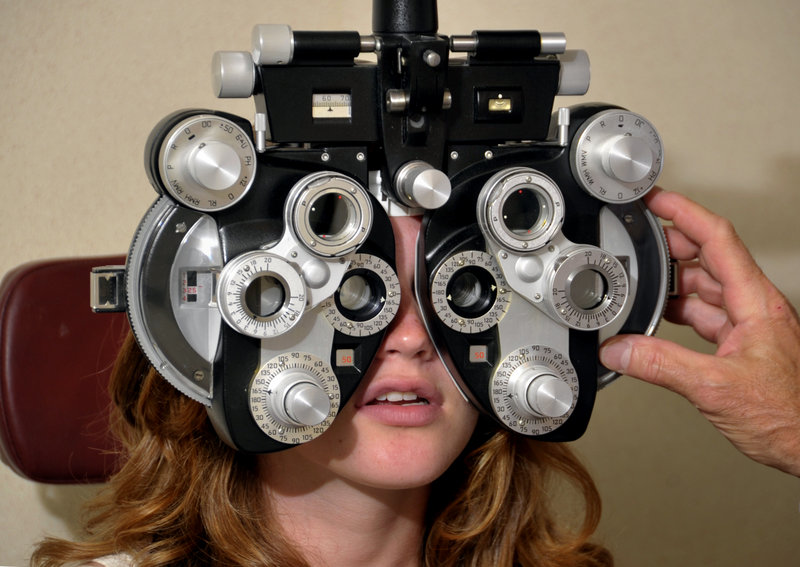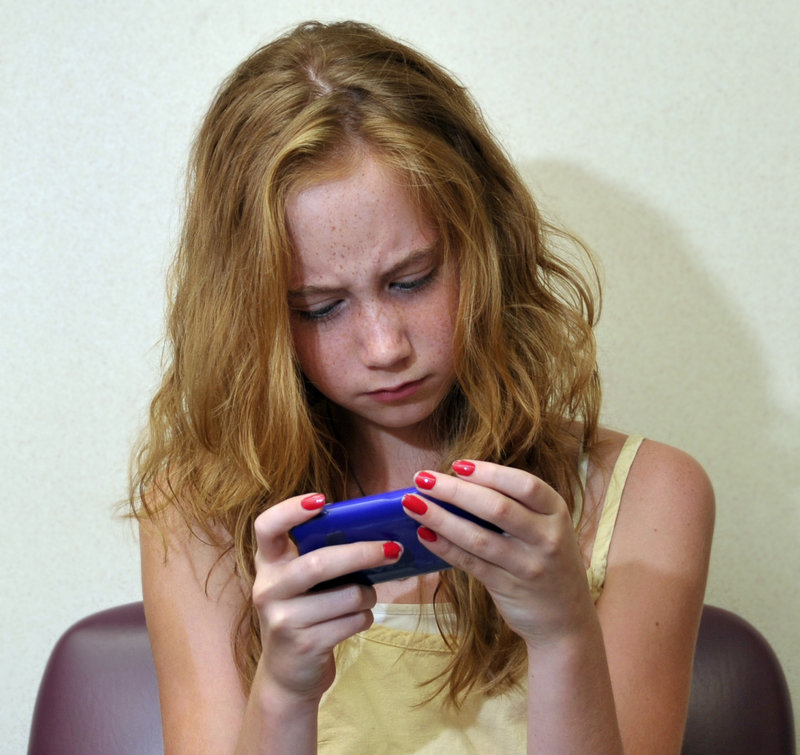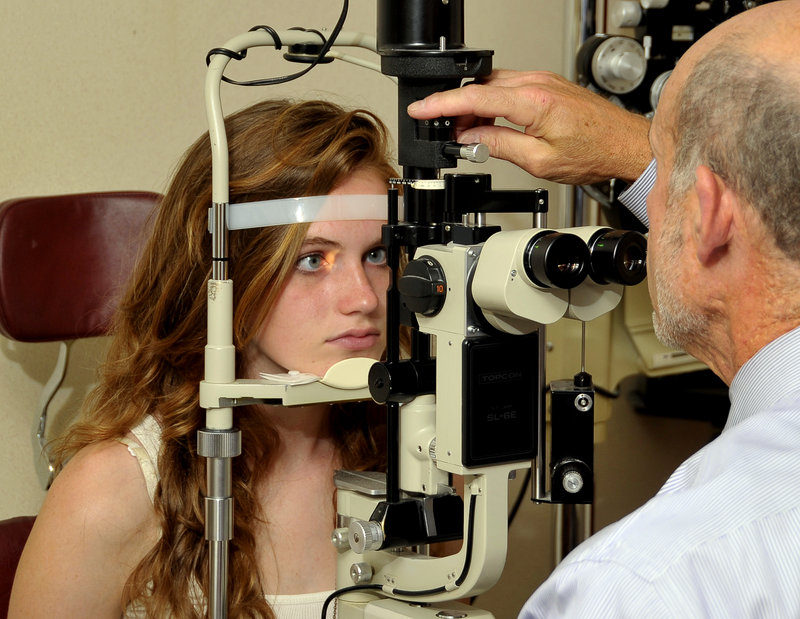PORTLAND – Addison Wood is at that age when friends begin to lose their hearing, have trouble seeing and experience joint pain in their hands.
She’s 14 years old.
Being a teenager can be hard on a young body these days, at least when the teen has the standard array of digital accessories at her fingertips — an iPod for blasting music, a cell phone for texting and a laptop or other device for going online.
A national study published last week says one in five American teens now has hearing loss, and doctors say a big reason is the iPods and other digital music players wired directly into their ears. Researchers also have linked other teen accessories — including video screens and cell phones — to vision problems, carpal tunnel syndrome and a condition called “teen texting tendinitis,” or sore thumbs.
“One of my friends has really bad hearing,” Wood said Thursday afternoon, as the Cape Elizabeth teen headed into a checkup with her optometrist. “She’s always, like, ‘What did you say?’“
Wood and her 12-year-old sister, McKenna, said they have stayed relatively free of the new teenage ailments by keeping the music volume down, not texting so much that their thumbs hurt and taking breaks from the iPhones and laptops.
Addison Wood wears contact lenses, but not because of her digital devices. “I don’t like to look at the screens too long,” she said. “After a while, I get kind of a headache.”
Eyestrain from staring at computer screens too long is a familiar problem, for adults and for teens. But teens are now focusing their eyes on smaller and smaller screens and holding them closer and closer to their faces, often to exchange messages with friends who are hunched over their own cell phones.
“Some of the kids even during the exam can’t stop their fingers from texting,” said Peter Hall, an optometrist in South Portland. “Nowadays, every kid is pretty much attached to their cell phone and computer All this technology represents a close-up stimulus that may foster nearsightedness.”
Research shows children and teens who stare at up-close screens too long can, in a sense, train their eyes to become nearsighted, according to Hall and other optometrists. It will only happen if a child is genetically susceptible to nearsightedness, but it could bring on the condition at a younger age than it would otherwise have started, they said.
“It used to be more computer screens (causing problems), but now the kids are getting smaller computers and iPhones,” said Steven Goldstein, a Portland optometrist. “I think they hold them even closer.”
Local optometrists said there is less data about increasing nearsightedness among teens than there is about hearing loss, but it could be a matter of time. “I think it’s happening right in front of us, it’s so new,” Goldstein said.
There also is little data showing increases in thumb injuries or carpal tunnel syndrome among teens because of all the e-mailing and texting. But doctors around the country are reporting more cases and are concerned about the long-term effects of incessant text messaging.
Laura Blaisdell, a pediatrician in Yarmouth, said kids tend to have a variety of repetitive motion injuries that their parents didn’t have a generation ago. Texting and keyboarding contribute, but so do sports that are now practiced on a daily basis virtually year-round, she said.
“I think our kids are participating in sports or other activities like texting to new levels,” she said. “It’s definitely something I’m seeing more in kids generally.”
Blaisdell said she was shocked by the report last week that nearly 20 percent of teens tested by a Boston-based research team have hearing loss, an increase of nearly 30 percent from a decade earlier. She plans to do more testing of her young patients, as well as more counseling about iPhones and iPods, she said. “I’m off to see a 19-year-old girl right now and I’m going to ask her about her hearing.”
Cindy Hyman, an audiologist at Northeast Hearing and Speech in Portland, said the news that teens are damaging their ears is no surprise to her.
“It’s about time that it really made it’s way to the public,” Hyman said. “I’m seeing people at much younger ages coming in (with hearing loss.) Twenty-five years ago, when I first started out, we really didn’t get people with hearing loss coming in until their 60s and 70s.”
Loud iPods are part of it, she said, but the world in general is louder, too. Loud music concerts and loud car stereos also do a lot of damage to the hair cells in young ears, according to Hyman. Once those hair cells are destroyed, they don’t come back, she said.
“They’re finding that they’re having a harder time hearing if there’s any background or competing noise. Sometimes they have physical sensations in their ear and the ear will feel blocked or plugged, or they’ve started with the tinnitus — ringing in the ears,” she said.
Hyman’s 16-year-old daughter, Emily, said she has taken her mother’s warnings to heart. She wears musician earplugs at loud concerts and has special iPod earphones that protect her ears.
“A lot of my friends have hearing loss from loud iPods,” Emily Hyman said. “I don’t think a lot of the teenagers realize it’s not going to come back.”
One friend, for example, has hearing loss in her right ear. “You kind of have to talk loudly if you talk on that side of her head,” Hyman said. “She just turned 16.”
Staff Writer John Richardson can be contacted at 791-6324 or at:
jrichardson@pressherald.com
Send questions/comments to the editors.





Success. Please wait for the page to reload. If the page does not reload within 5 seconds, please refresh the page.
Enter your email and password to access comments.
Hi, to comment on stories you must . This profile is in addition to your subscription and website login.
Already have a commenting profile? .
Invalid username/password.
Please check your email to confirm and complete your registration.
Only subscribers are eligible to post comments. Please subscribe or login first for digital access. Here’s why.
Use the form below to reset your password. When you've submitted your account email, we will send an email with a reset code.